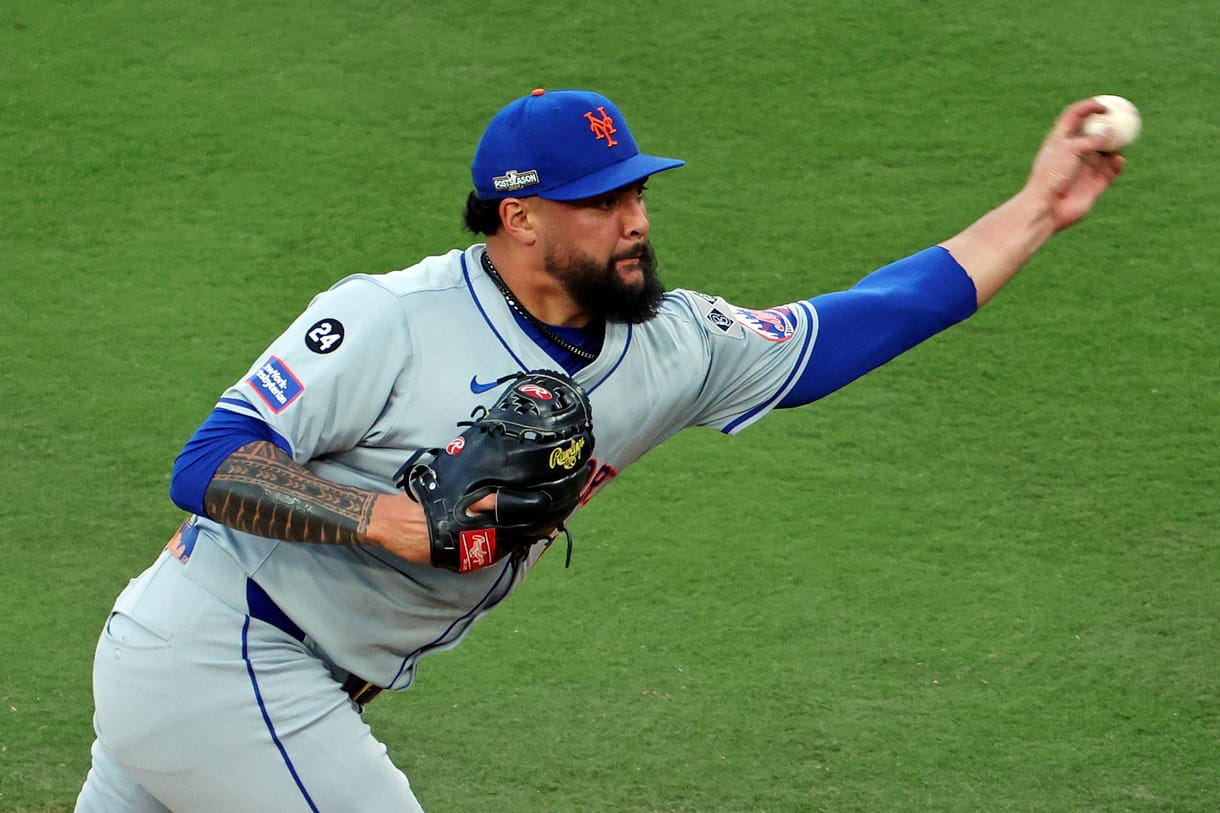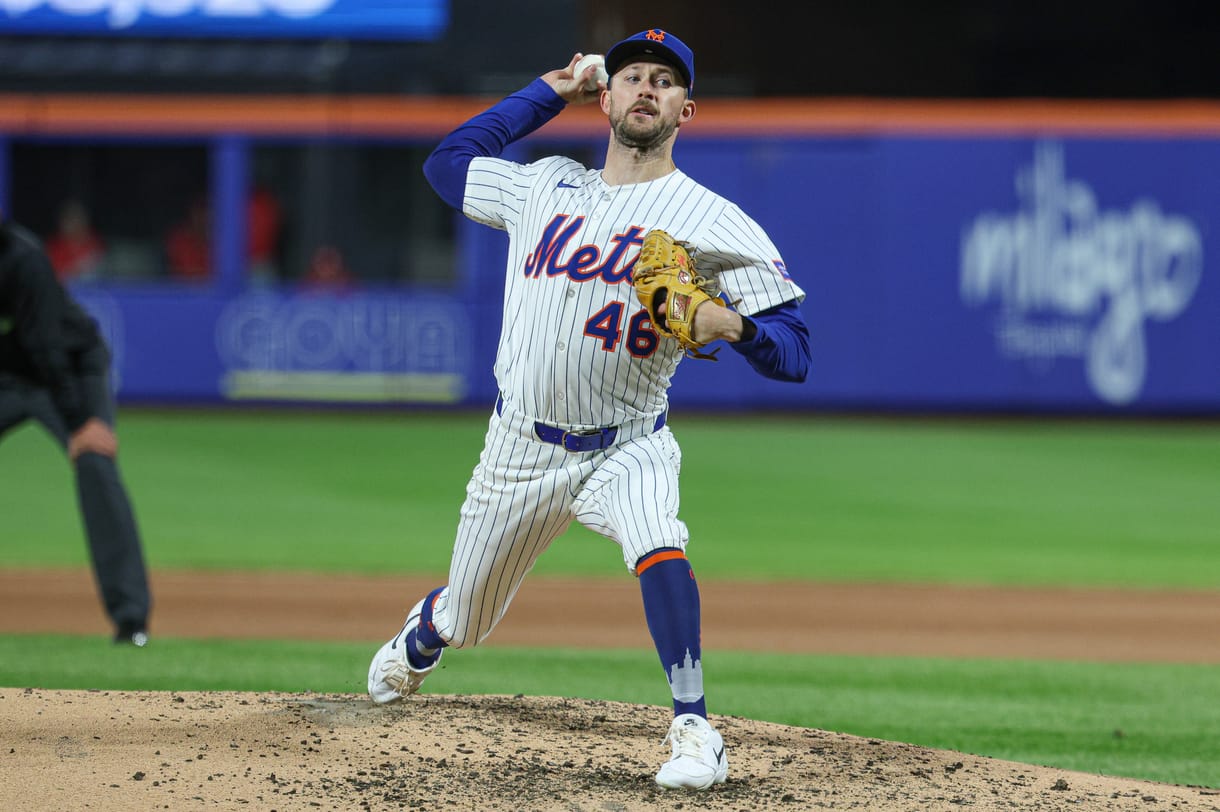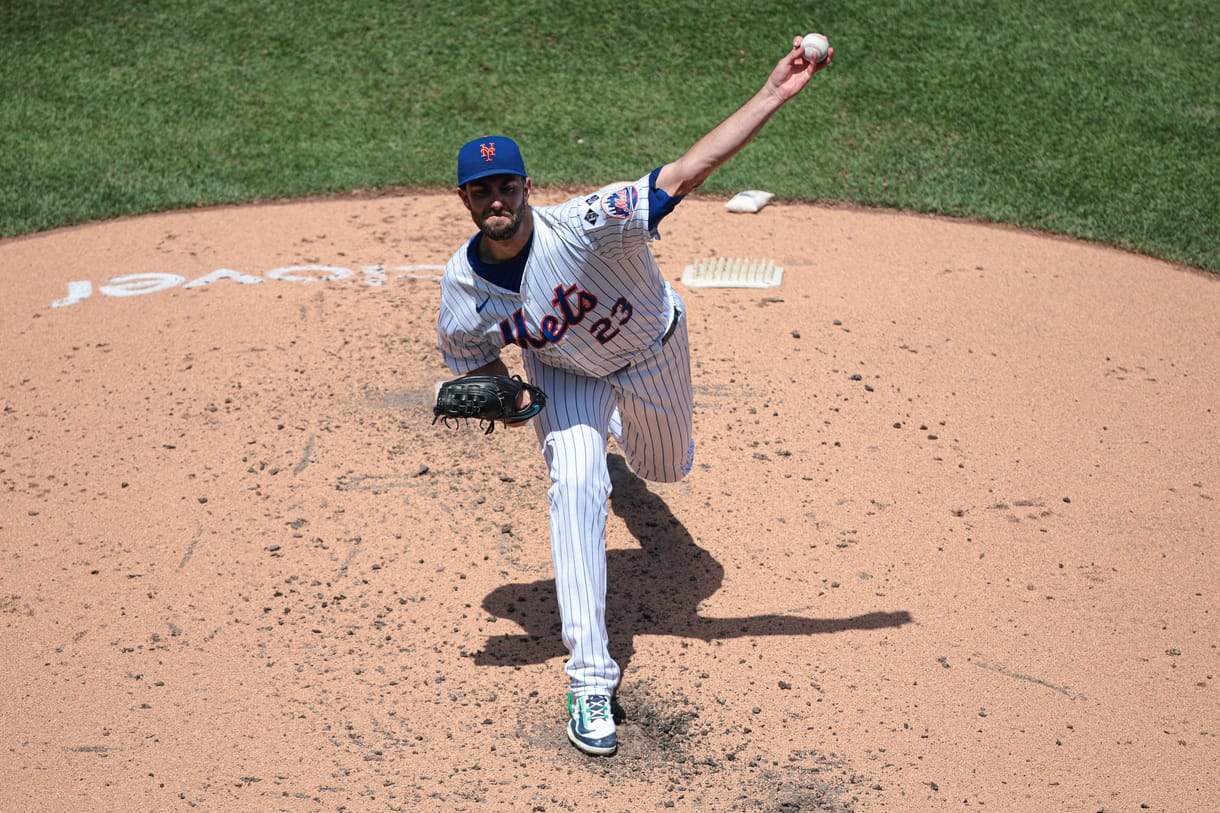
For too long, New York Mets fans have endured a narrative that felt like a jab to the ribs: ‘Your pitching can’t hang.’
While opposing fanbases sang the praises of offensive fireworks, Mets faithful were left defending a rotation written off as middling.
But baseball, like life, has a way of flipping scripts—and right now, the Mets are the ones holding the pen.
This isn’t some mirage in April fog. It’s mid-May, and the Mets lead MLB with a glittering 2.74 ERA from their starting rotation.
They’ve done it without three key pieces: Frankie Montas, Sean Manaea, and Paul Blackburn. That alone should raise eyebrows across the league.
Instead, it’s been a cast of names flying under the radar who’ve carried the torch: Clay Holmes, Tylor Megill, Griffin Canning, David Peterson, and Kodai Senga.

It’s like watching a jazz band where everyone unexpectedly learned to solo—each arm contributing rhythm, groove, and just enough heat.
Blackburn, Montas, Manaea: reinforcements are nearly ready
The scary part? Reinforcements are almost here. The cavalry isn’t just coming—it’s stretching, warming, and heading into the bullpen tunnel.
Paul Blackburn is the closest of the trio, poised to throw 75 pitches in a Double-A game this Friday. His return could come before the calendar flips to June.
Frankie Montas is flirting with a rehab assignment as well, and Sean Manaea is already back on the mound, feeling things out.
That means by the time summer’s heat settles in, the Mets might have eight capable, healthy starters. And that’s when the real puzzle begins.
It’s a good problem—like having too many gifts to wrap. But it will force some tough conversations and strategic recalibration.
A six-man rotation could be the key to balancing depth
When the full group is ready, the Mets face a crucial question: how do you juggle eight worthy arms without disrupting chemistry?
The obvious answer, and one already floating within the organization, is a shift to a six-man rotation.
Not only would that reduce wear and tear over a grueling season, it would preserve arms like Senga and Peterson for when it matters most.
Anthony DiComo nailed it in his recent piece, saying injuries often sort these things out. But if everyone stays healthy, choices must be made.
Sending anyone to Triple-A? Unlikely. Not a single starter has pitched poorly enough to deserve that fate.
And moving someone to the bullpen might be a temporary fix, but it’s not a long-term solution for proven arms.
The six-man idea offers breathing room and stability. It would allow the Mets to carry this momentum without burning out by August.
Why this depth feels different—and more dangerous
There’s something uniquely powerful about this version of Mets depth. It’s not top-heavy—it’s balanced, diverse, and confident.
Each starter brings a different flavor: Senga’s ghost fork, Megill’s newfound stuff, Holmes’ edge, Canning’s precision, Peterson’s consistency.

And now you add the power of Montas, the savvy of Manaea, and the stability of Blackburn? That’s a recipe that travels deep into October.
Think of it like a Swiss Army knife—whatever situation arises, there’s a solution tucked inside the roster.
That kind of flexibility is what separates pretenders from real postseason threats.
If this is what the Mets look like running on five cylinders, imagine them with a full engine. Buckle up, baseball.